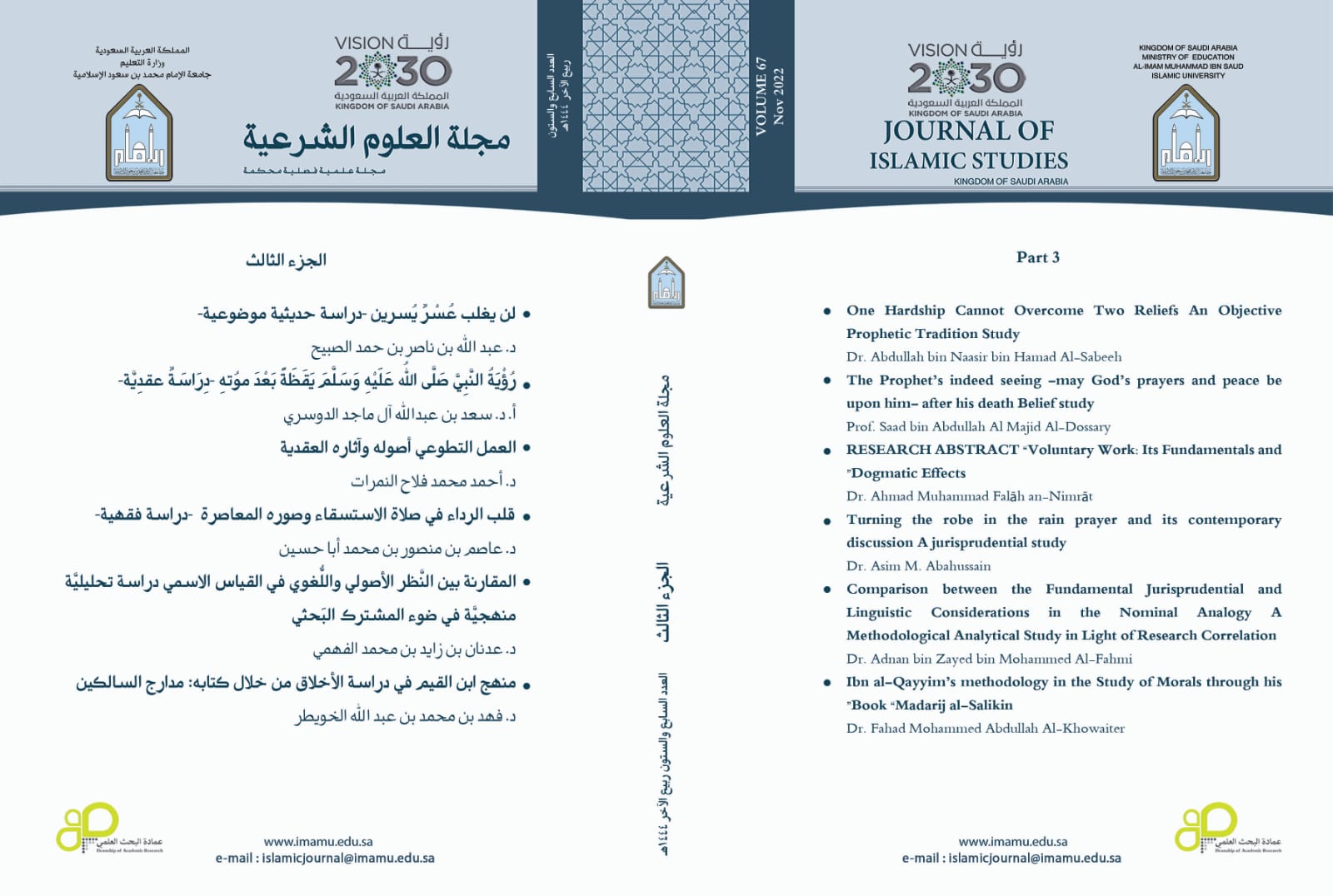Turning the robe in the rain prayer and its contemporary discussion A jurisprudential study
Keywords:
The overturning of the robe, the transformation of the robe, the intent of the transformation of the robe, contemporary discussions of the overturning of the robeAbstract
Modern research deals with what is meant by the robe, the rain prayer and prayer in the robe the turning of the robe, the rain prayer its time and how to pray, the fiqhi discussions on turning the robe, and contemporary discussions of it and its ruling.
The robe covers the top even if the concealed goes more than just the top of the body, or if the dress is over the clothes or even covers the head in this case. There is no difference between the scholars who say of the legislation of the rain prayer that using the robe is also legislated and permissible, and it includes the Imam as well as the ones praying behind the Imam along with women if there are no problems in the awrah shown according to the correct view
Its description: To place what is on his right over his left, and what is on his left on his right, and as for turning the robe around, it is not prescribed, and the time for changing the robe is when facing the qiblah when making supplication, whether during the sermon or after it. It is famously known that the Imam changes his robe while standing and the people while sitting. He supplicates standing and supplicates while sitting. The imam and the congregation leave their robes after turning until they take them off or return to their homes. The most correct view is that it is prescribed to wear the robe in order to change it (put the right side over the left side) after the prayer and the most correct reason for it is that the intention behind the robe is: in order to achieve optimism by changing the situation from drought to rain and fertility, and from narrowness to spaciousness, and the most correct statement is to change clothes that take the ruling on the robe only. It is called the cadaar, as well as the shemagh or the ghutra. As for the shirt with sleeves and a cap, it is not prescribed to change them; Because the description of the robe does not apply to them, and whoever transforms something is satisfied with it, then whoever wears a mashalh and a shemagh, for example, is satisfied with diverting the mashallah from the shemagh, and even if he changes the shemagh without the shemagh.




